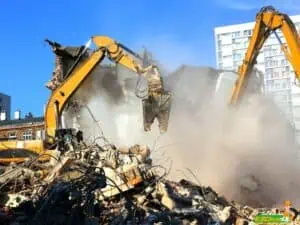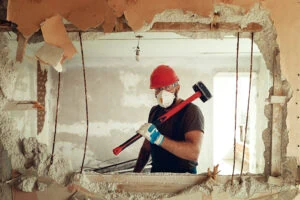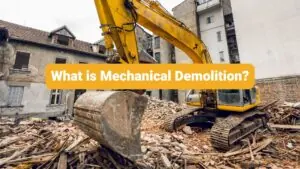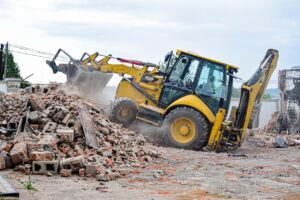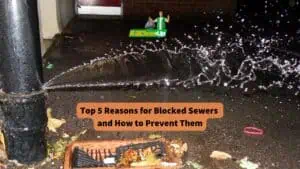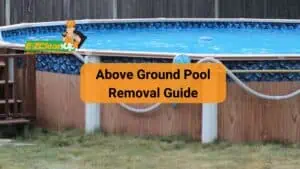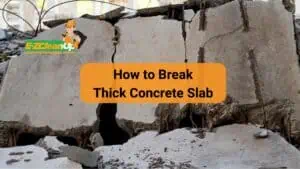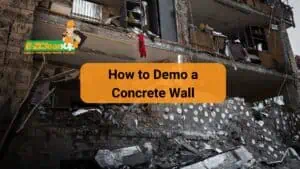What is a Demolition Hammer?
A demolition hammer is a robust tool designed for breaking down structures, specifically utilized for demolishing substances like concrete, brick, and tile. It is characterized by its heavy weight and significant power.
It delivers high-impact energy, enabling users to efficiently break apart various materials, making it a vital asset in construction, renovation, and demolition projects.
In this comprehensive guide, we will explore the numerous aspects of demolition hammers, including their uses, alternative names, operation techniques, and safety precautions.
We will also discuss the differences between demolition hammers and other similar tools, helping you make informed decisions on the best tool for your specific needs.
What is a Demolition Hammer Used For?
Common applications in construction and renovation projects
Demolition hammers are employed in a wide range of construction and renovation projects, including:
- Breaking concrete slabs, foundations, and walls.
- Removing tile, plaster, and masonry.
- Tearing down walls and ceilings made of brick or other materials.
- Creating openings for windows, doors, and ventilation systems.
- Trenching and excavating for plumbing, electrical, and other utilities.
- Breaking up and removing rocks or compacted soil.
- Chiseling and shaping concrete and stone surfaces.
How to Use a Demolition Hammer
Selecting the right demolition hammer for the job
To ensure optimal performance, selecting the right demolition hammer for your project is crucial. Consider factors such as:
- Power source: Choose between electric, pneumatic, or hydraulic demolition hammers based on the availability of power sources and the required power output.
- Weight and size: Heavier and larger hammers typically deliver more impact force but can be more challenging to control. Select a demolition hammer that balances power and manageability.
- Bit types and sizes: Different bits are designed for specific tasks, such as chiseling, breaking, or drilling. Choose the appropriate bit based on the material and the desired outcome.
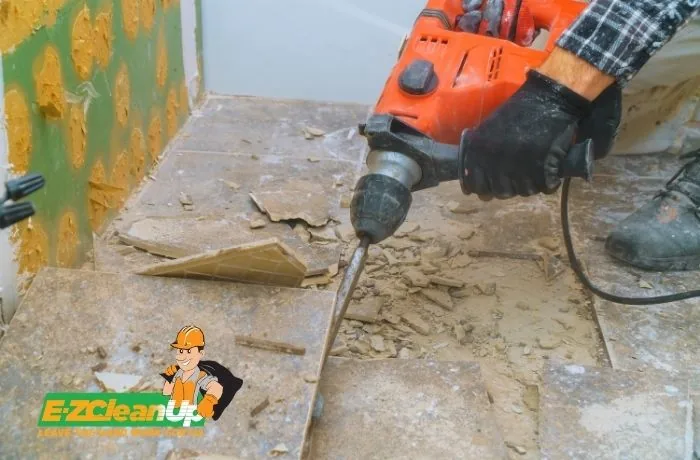
Proper technique and handling
To use a demolition hammer effectively and safely, follow these guidelines:
- Wear appropriate personal protective equipment (PPE) such as safety glasses, gloves, ear protection, and steel-toed boots.
- Ensure the bit is properly installed and secured before starting the tool.
- Hold the demolition hammer with both hands and maintain a stable, balanced stance.
- Start the hammer at a slight angle to the surface to prevent the bit from getting stuck.
- Apply steady pressure and allow the tool’s weight and power to do the work. Avoid forcing or pushing the hammer too hard.
- Keep your body relaxed and absorb the tool’s vibration with your arms and legs to minimize fatigue and strain.
Tips for efficient and safe usage
- Take regular breaks to reduce fatigue and the risk of injuries.
- Inspect the tool, power cords, and bits for damage before each use.
- Keep the work area clean and free from trip hazards.
- Use the appropriate bit for the task and material to prevent damage or inefficiency.
How Long Can You Use a Demolition Hammer Without Stopping?
Recommended usage time
While there isn’t a strict rule for how long a demolition hammer should be used without stopping, it’s essential to take regular breaks to reduce fatigue and the risk of injuries. It’s generally recommended to work in intervals of 15-30 minutes, followed by a short break to rest and rehydrate.
Risks of Using a Demolition Hammer
Potential injuries and accidents
Using a demolition hammer involves certain risks, including:
- Injuries from flying debris or fragments: Chipping or breaking materials can cause small pieces to fly off at high speeds, potentially causing injuries.
- Strains and sprains: Improper handling or overexertion while using a demolition hammer can lead to muscle strains or sprains.
- Falls: Working on elevated surfaces or uneven ground increases the risk of falls while using a demolition hammer.
- Electrocution: Electric demolition hammers pose a risk of electrocution if not properly maintained or used near live electrical wires.
Damage to structures or materials
Using a demolition hammer without proper knowledge or technique can result in:
- Unintentional damage to surrounding structures, materials, or utility lines.
- Inefficient work, requiring more time and effort to complete the task.
- Increased wear and tear on the tool, reducing its lifespan.
Noise and vibration hazards
Prolonged exposure to the noise and vibration produced by demolition hammers can lead to:
- Hearing loss or damage.
- Hand-arm vibration syndrome (HAVS), a condition caused by long-term exposure to vibrating tools, resulting in symptoms such as pain, numbness, and reduced grip strength.
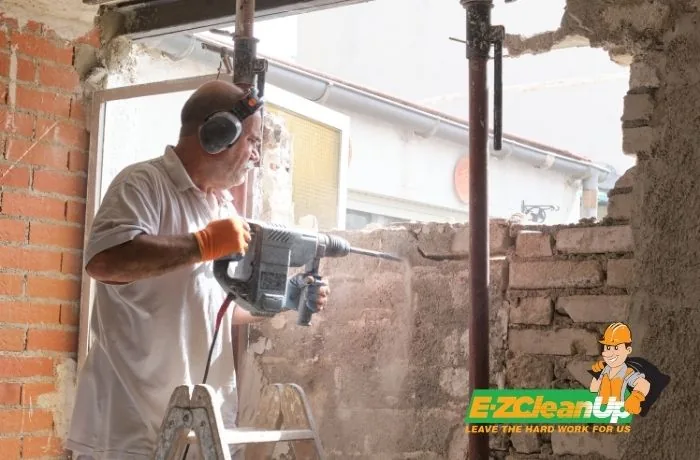
Key Safety Rules When Using a Demo Hammer
Personal protective equipment (PPE)
To minimize the risks associated with using a demolition hammer, always wear appropriate PPE, including:
- Safety glasses or goggles to protect your eyes from flying debris.
- Ear protection to reduce noise exposure.
- Gloves to improve grip and reduce vibration.
- Steel-toed boots to protect your feet from falling objects or debris.
- A hard hat, particularly when working in areas with overhead hazards.
Safe handling and operation practices
Follow these guidelines to ensure safe handling and operation of a demolition hammer:
- Read and follow the manufacturer’s instructions and guidelines.
- Maintain a stable, balanced stance while using the tool.
- Keep both hands on the tool at all times and avoid overreaching.
- Start the hammer at a slight angle to the surface to prevent the bit from getting stuck.
- Avoid using the tool in wet or damp conditions to reduce the risk of electrocution.
Regular maintenance and inspections
Proper maintenance and inspections are crucial for safe and efficient use of a demolition hammer:
- Inspect the tool, power cords, and bits for damage before each use.
- Clean and lubricate the tool as recommended by the manufacturer.
- Replace worn or damaged parts promptly.
- Store the tool in a dry, secure location when not in use.
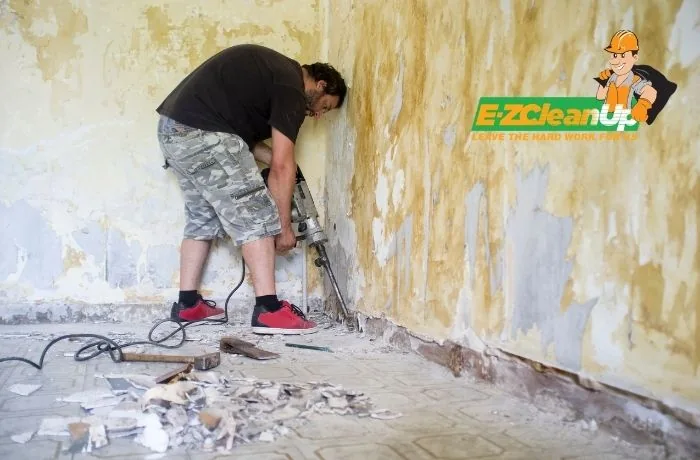
How Much Does a Demolition Hammer Cost?
Below is a comparison table of four demolition hammers with different features, prices, and links to purchase on Amazon:
| Product | Price | Key Features | Brand | Power Source | Maximum Rotational Speed | Voltage | Amperage | Link |
| XtremepowerUS 2200W Heavy Duty Electric Demolition Jack Hammer | $149.95 | Breaker + 2 Chisel Bit Set | XtremepowerUS | Corded Electric | 1900 RPM | 115 Volts | 15 Amps | Amazon |
| VEVOR Demolition Jack Hammer | $149.22 | Breaker + 4 Chisel Bit Set | VEVOR | Corded Electric | 1400 RPM | 110 Volts | N/A | Amazon |
| AOBEN 1-1/4 Inch SDS-Plus Rotary Hammer Drill | $99.99 | N/A | AOBEN | Corded Electric | N/A | 120 Volts | 13 Amps | Amazon |
| Berserker 1300W 12-Pound SDS-Max Demolition Jack Hammer | $139.79 | N/A | Berserker | Corded Electric | N/A | 120 Volts (AC) | 11 Amps | Amazon |
Please note that there may be affiliate links in this article and the prices and availability may change over time.
Comparison with other tools for similar tasks
While demolition hammers excel at breaking down hard materials, there are other tools designed for specific purposes that might be more suitable in certain situations:
Demolition Hammer vs. Jackhammer
Comparison of the two tools
- Demolition hammers are typically electric and used for breaking concrete, masonry, and other hard materials.
- Jackhammers are pneumatic or electric-powered tools that use a rapid hammering action to break concrete, asphalt, and other hard surfaces.
Situations where one is more suitable than the other
- Demolition hammers are best for smaller-scale demolition tasks, such as breaking up concrete slabs, walls, floors, or different types of interior demolition.
- Jackhammers are more suitable for larger-scale demolition projects, such as breaking up roads, foundations, or large concrete structures.
Demolition Hammer vs. Rotary Hammer
Key differences between the two tools
- Demolition hammers are designed primarily for breaking and chipping hard materials.
- Rotary hammers are versatile tools that can drill, hammer, and chisel, making them suitable for a wider range of tasks.
When to choose one over the other
- Choose a demolition hammer for projects that require breaking and chipping hard materials without the need for drilling.
- Opt for a rotary hammer for tasks that require drilling, hammering, and chiseling, such as drilling holes in concrete or masonry, installing anchors, or light demolition work.
Demolition Hammer vs. Core Drill
Distinct functions and uses
- Demolition hammers are used for breaking and chipping hard materials.
- Core drills are designed to extract cylindrical samples from concrete, masonry, or other hard materials, often for testing purposes or to create precise holes.
Situations where one tool is preferable
- Use a demolition hammer when the task requires breaking or chipping hard materials, such as during soft demolition or renovation projects.
- Choose a core drill for projects that require precise hole drilling or extraction of core samples for analysis, such as testing the integrity of concrete structures or installing piping and electrical conduits.
Other Names for Demolition Hammers
Stomping hammers
Stomping hammers are another term for demolition hammers, particularly used to describe the tool’s powerful impact and ability to break through tough materials. This name highlights the tool’s primary function: delivering strong, concentrated force to demolish structures with ease.
Electric breakers
Electric breakers refer to demolition hammers powered by electricity. They are usually connected to a power source through a cord or can be cordless and run on battery power. The term emphasizes the tool’s energy source and differentiates it from pneumatic or hydraulic demolition hammers that rely on air or fluid pressure, respectively.
Pavement breakers
Pavement breakers are a specific type of demolition hammer designed to break up pavement, concrete, or asphalt surfaces. While they are essentially a type of demolition hammer, this name highlights their intended use in roadwork, sidewalk repairs, and other similar applications.
In conclusion
a demolition hammer is a powerful tool used in construction, renovation, and demolition projects. It breaks down structures like concrete, brick, and tile, making it essential for various applications.
By understanding its uses, safety measures, and selecting the right tool, you can unlock its power for efficient and effective results. Stay safe by wearing protective gear, using proper handling techniques, and taking breaks.
Good luck!!


